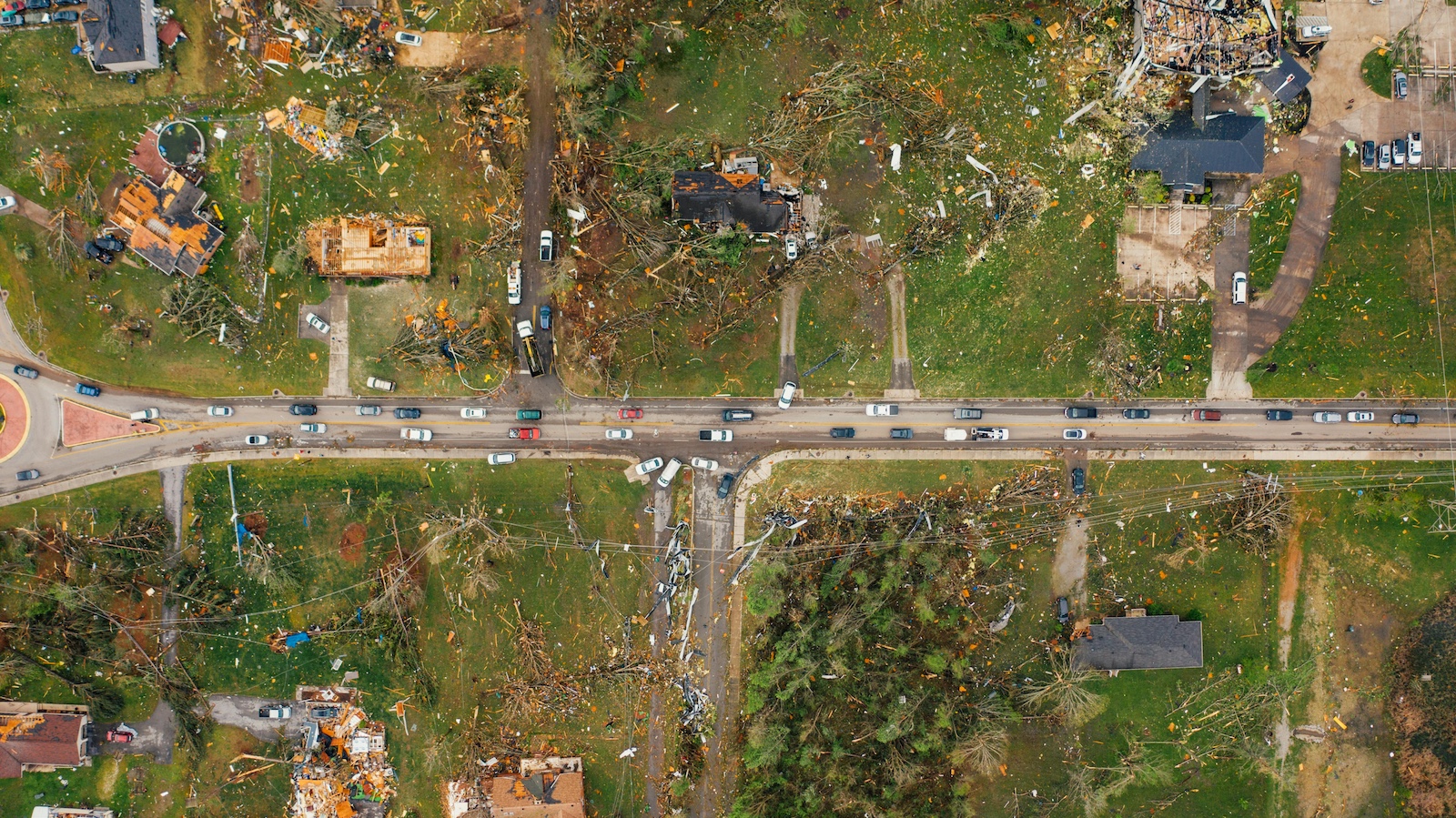Paul Carroll
I read a piece in the New York Times recently by Nicholas Kristof about how heat affects people in more ways than we realize. People fall off ladders much more often in hot weather. They make more mental errors. Kids learn less when they’re hot.
And, of course, the world is continually getting hotter.
So I was really interested to hear your presentation at the inaugural meeting of CIRCAD about your work investigating how insurers might develop coverages that protect against the problems heat causes. Could you tell me a bit about the genesis of your work?
Jordan Clark
My PhD focused on extreme heat. I did a lot of work with high school football players, for instance, to understand how they can better use heat stress information to safeguard their health. That kind of transformed into forecasting extreme heat. At Duke, over the past year and a half, we’ve had some engagements related to climate, insurance, and finance, and there are a lot of unanswered but pressing questions related to heat.
It’s a tough peril to define and insure even though it’s affecting almost every part of society. We think about what heat does to contribute to hurricanes, convective storms, drought and wildfire, but the direct effects of extreme heat are largely under- or unmeasured.
One of our goals is to influence public policy, and that can’t happen if the impacts aren’t understood and quantified.
Paul Carroll
You talked a fair amount about how heat contributes to injuries on the job and to people missing work. Could you talk a bit about what you’re thinking?
Jordan Clark
Let’s say a company is constructing a building. At the moment, it could buy insurance for heavy rain or flooding that would delay the project, but it can’t buy a policy that covers extreme heat that either diminishes workers’ productivity or makes it too dangerous for them to show up at all—something that is happening in Houston as we speak.
Can we figure out a way to cover the workers for their lost wages? And can we cover the construction company itself for the costs of the delays?
Heat is tricky. Maybe workers can work but only at 40% of their normal productivity, because they have to get out of the sun and take frequent water breaks.
Paul Carroll
Business interruption is another issue you raised.
Jordan Clark
Some small businesses and some municipalities have expressed concern about what can happen to foot traffic during extreme heat. They’re wondering if the reduction in sales is insurable. How would that work?
Paul Carroll
You also talked about open air workers in India who are getting some coverage for heat.
Jordan Clark
The idea is that, if someone has a food truck, for example, they could insure themselves for possible lost time. The India example isn’t directly applicable to the U.S. because that was kind of done through an NGO [non-governmental organization] and workers union. We would miss a lot of workers in the U.S. if we just did this through a union.
There were also some interesting challenges there. The women who are part of the program had days when the insurance kicked in because the temperature exceeded a certain level, but the money didn’t arrive immediately, and they needed money that day or the next, so they actually went and performed some other labor outside. The insurance didn’t prevent them from exposing themselves to danger. They just got double the normal money.
So timeliness of payment is something we have to work on. That maybe gets us into forecasting extreme heat, rather than just reacting to it after it happens. I think there’s potential there.
Paul Carroll
I assume forecasting could also help better prepare for the extreme heat.
Jordan Clark
Right. People can sometimes get their health insurance premiums lowered if they show that they exercise regularly, and I can see construction companies having premiums reduced if they buy tents, buy fans, and so on.
Paul Carroll
When I think about heat, I mostly think of what it does to people, but you talked about a number of ways that heat affects property insurance, too.
Jordan Clark
There is increased wear and tear on siding and roofing materials and HVAC units due to extreme heat and fluctuations. That issue starts to get into what the insurance industry is already covering, but insurers, relying on historical data, may not be accounting fully for what increasing heat is doing to undermine the integrity of structures and equipment. Homes, for instance, may be more likely to suffer wind damage than underwriters understand.
This past summer, there were drawbridges in the New York City area where authorities had to bring out a powerful sander because parts had expanded so much that the bridges couldn’t close. Amtrak had to suspend service at times because the rails just got too hot. Heat increases wear and tear on bridges and other infrastructure at the county and municipal level. Heat can cause big problems for the electric grid.
Paul Carroll
You also talked about how extreme heat can compound other problems.
Jordan Clark
Heat is an exacerbating factor on every peril. If a hurricane knocks out the power grid, then all kinds of people lose air conditioning and are vulnerable to heat.
We’re already in dangerous territory anyway because of the rising heat. In manufacturing or warehouse settings, even in the South, they tend not to be air-conditioned. They just use big fans, and when temperatures get high enough the fans lose their ability to cool people sufficiently. Something like 50,000 schools in the U.S. don’t have air-conditioning. Those problems aren’t insurable, but thinking about the cost of upgrading to deal with temperature is mind-boggling.
Paul Carroll
So you’re saying the first thing to do is to quantify the heat risk, the second is to determine if it’s insurable, and the third is to explore what coverage might look like. This is new territory. How far along are some of the early efforts?
Jordan Clark
We’re mostly looking at the data and having conversations. But we’ve been increasingly engaging with certain sectors, such as construction and some municipal and county governmental organizations. And we have a pilot project going with an electric utility that pays it if temperatures reach a certain level, to cover the expected cost of shutting off power and having to compensate its customers. We’ll mostly be talking about small pilot projects for the next year or two.
Paul Carroll
I figured this was early days. I’ll be fascinated to see where you go from here.
Thanks, Jordan.







